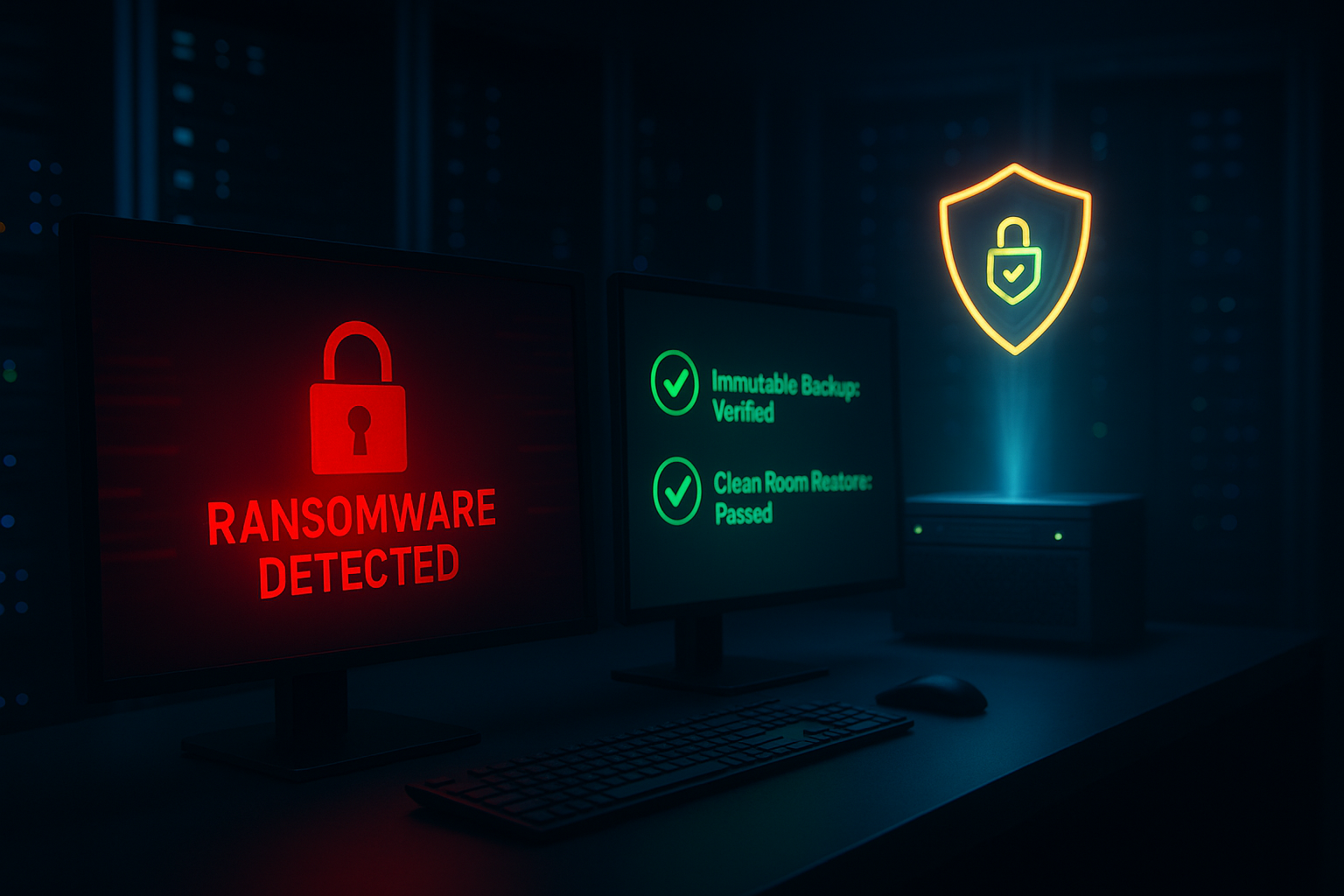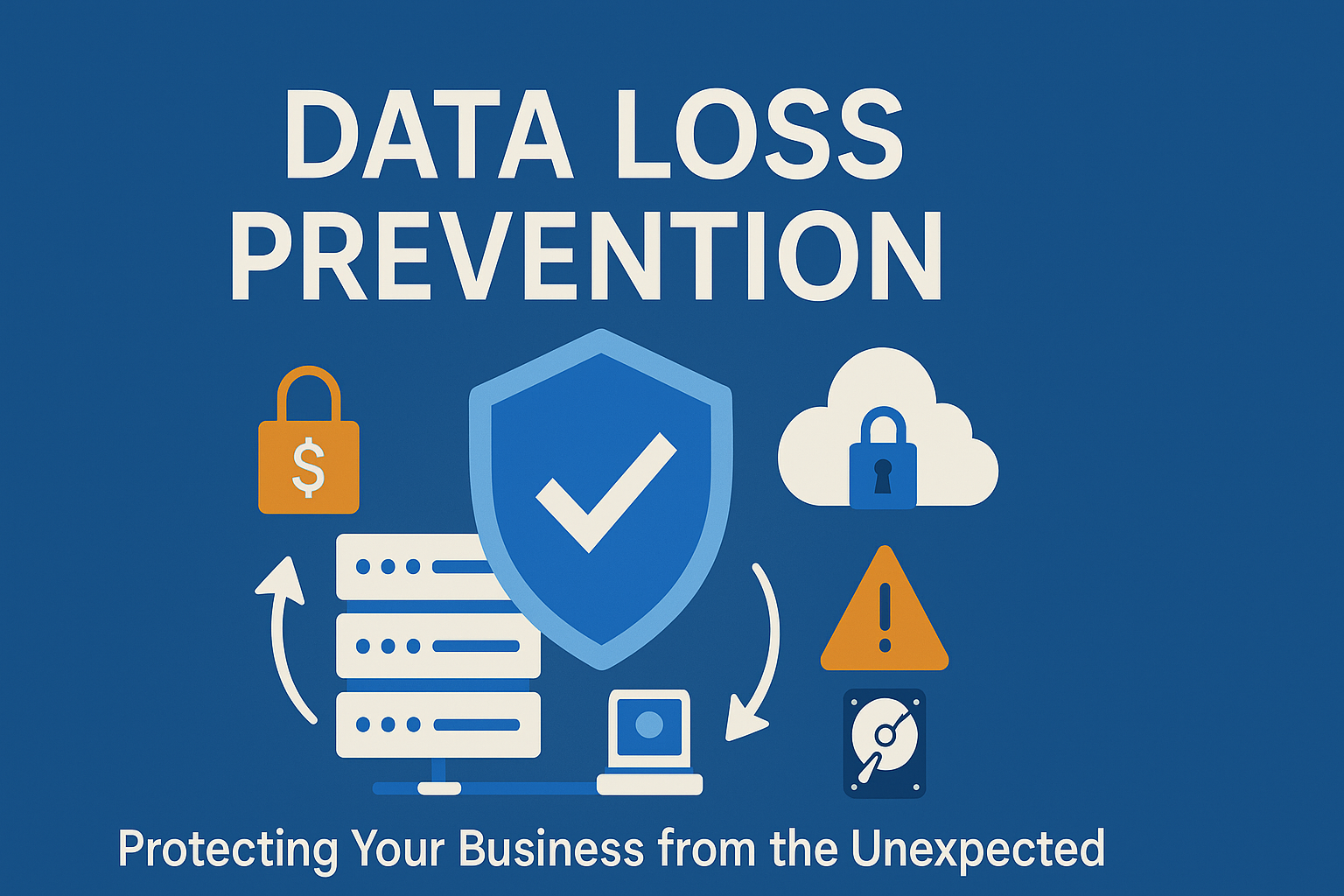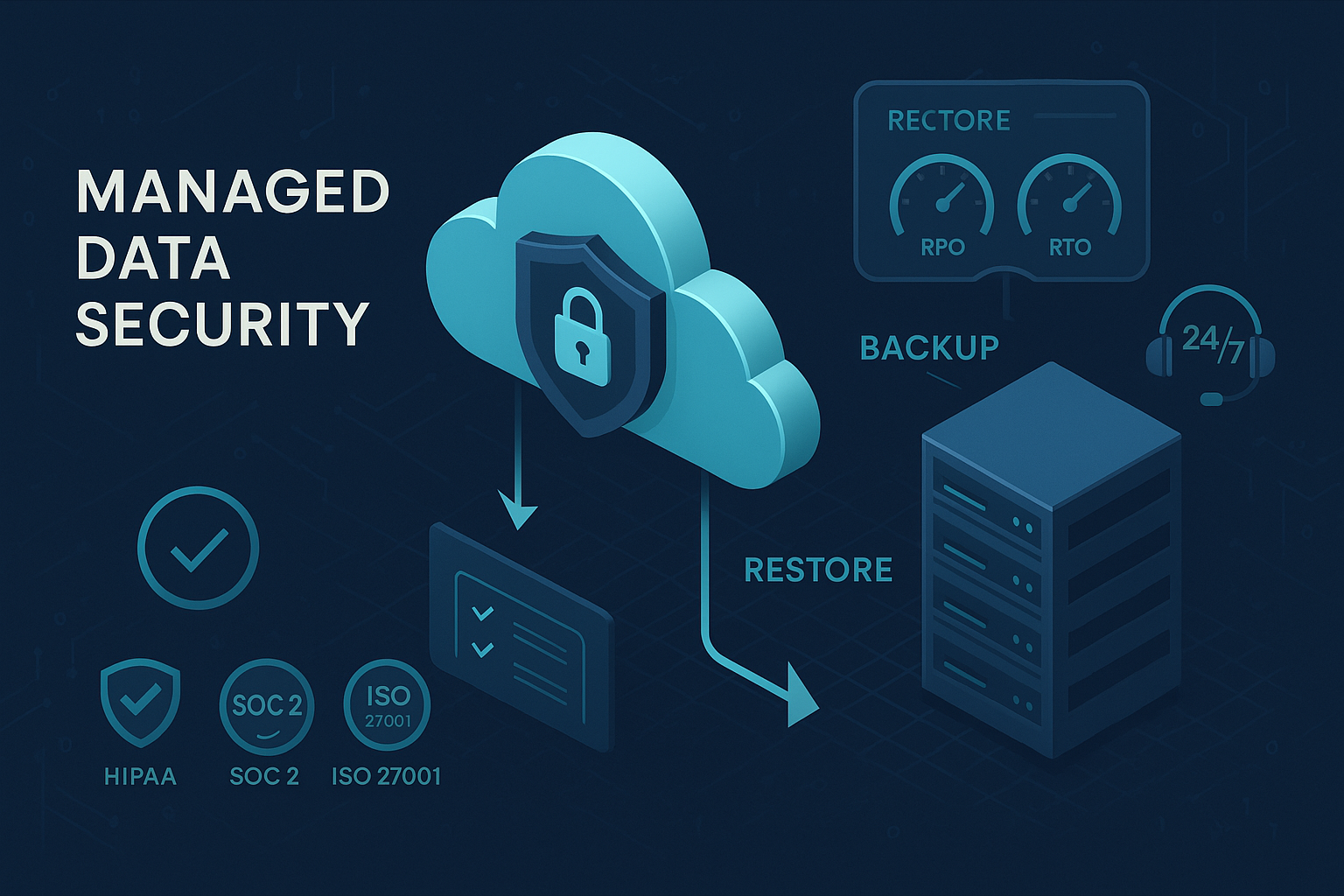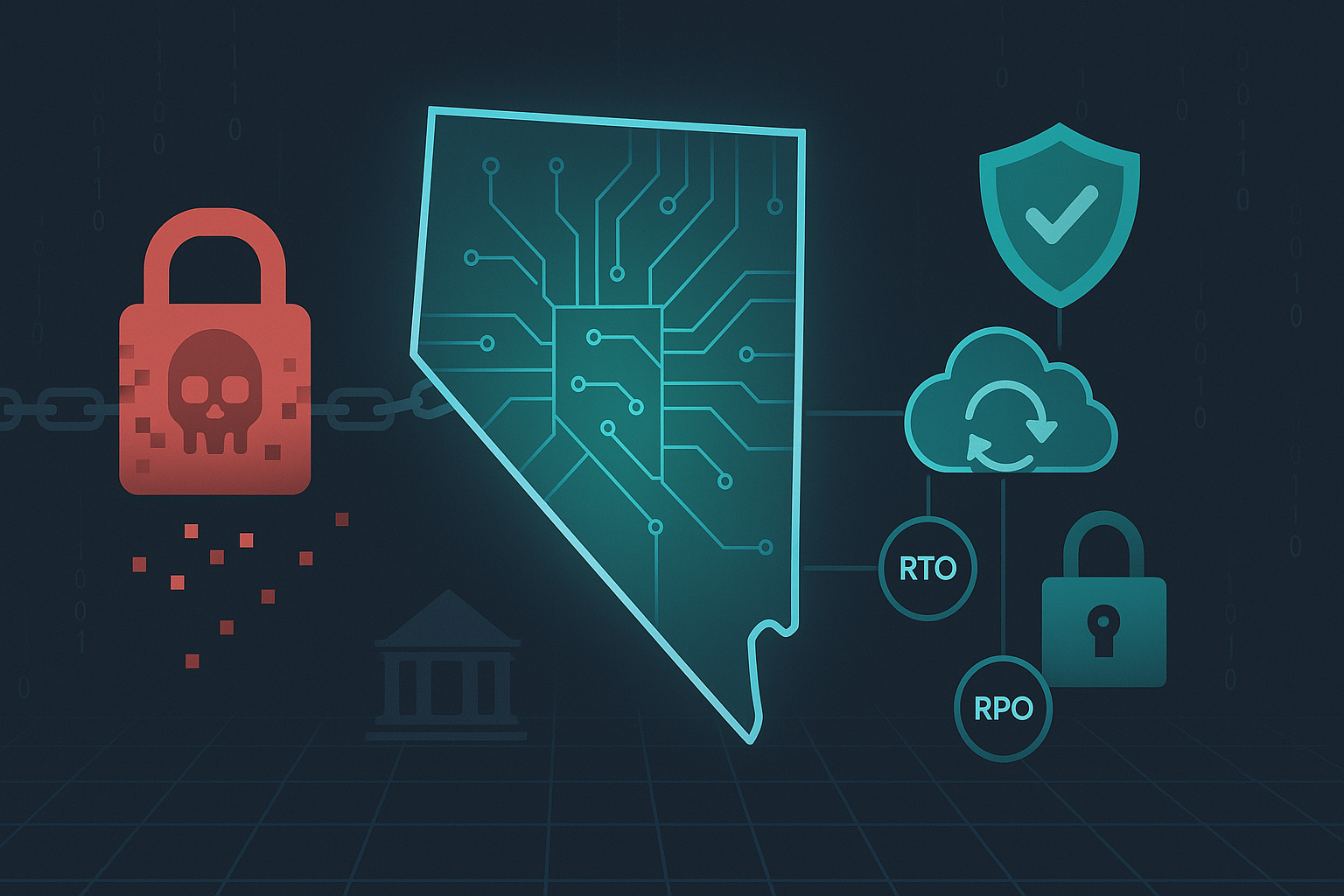DATA PROTECTION TRENDS, NEWS & BACKUP TIPS
Business Continuity in the Cloud
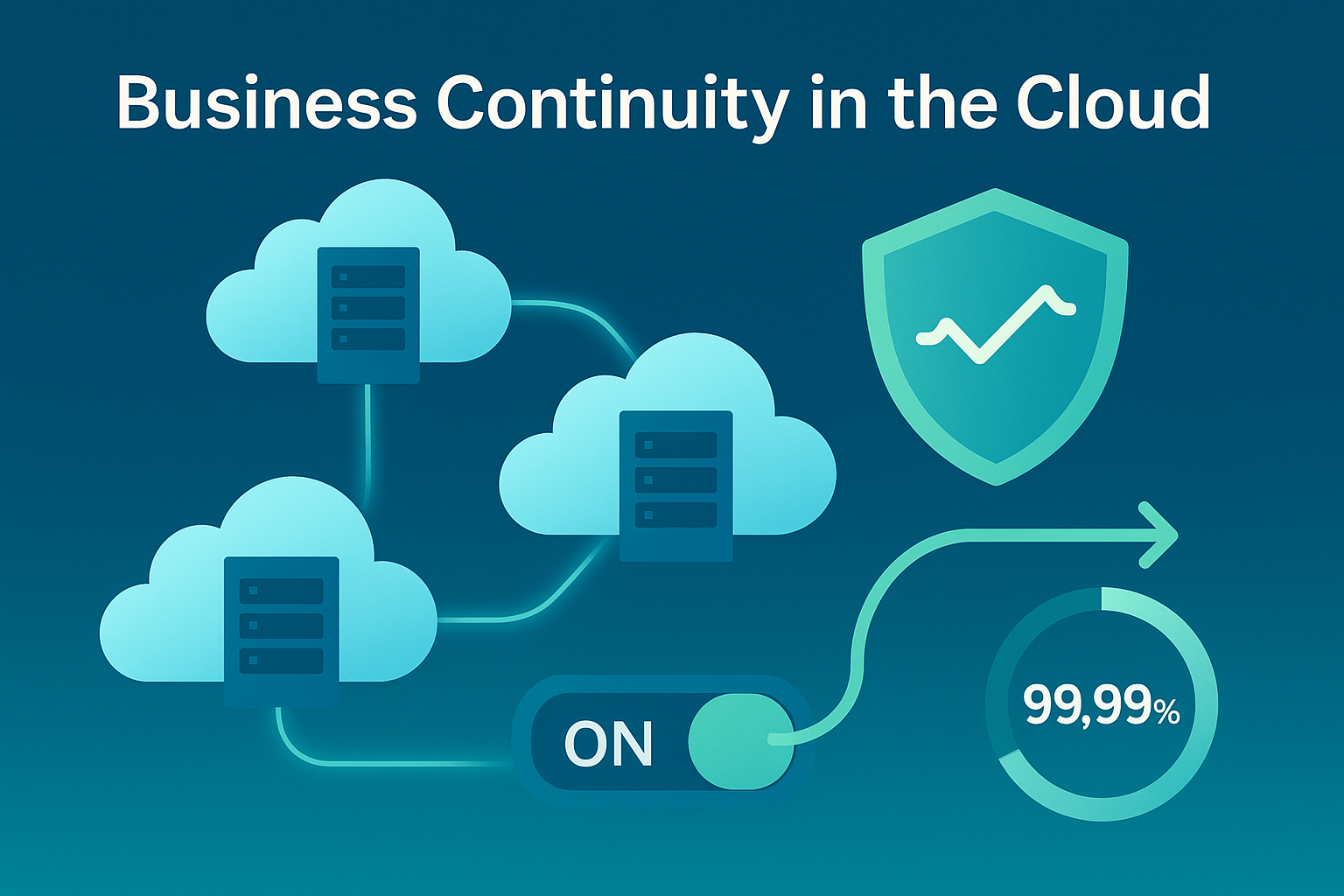
Imagine your business coming to a standstill because of an unexpected outage: employees are unable to work, customers are locked out, and transactions halt. As an IT decision-maker, you know how high the stakes are. Unplanned downtime is more common (and costly) than many realize.
In fact, 76% of companies experienced downtime in 2022. For small and mid-sized businesses, even a single hour of downtime can cost tens of thousands, or even hundreds of thousands, of dollars. In our increasingly cloud-driven world, ensuring uninterrupted service is not just an IT concern. It is central to your business’s survival and reputation.
Why Cloud-Powered Continuity Matters
We understand that keeping systems running 24/7 is vital to you and the people who rely on your services. This is where the cloud serves as a true caregiver for your data and operations. Cloud technology has transformed business continuity by eliminating single points of failure and providing flexibility.
By decentralizing data storage and computing, the cloud reduces the risk of any one outage taking down your whole business. If one data center or region goes offline due to a disaster, your applications and data can be accessed from another location, preserving continuity and peace of mind.
Equally important, the cloud’s on-demand scalability means you can recover without waiting to procure hardware or set up a new site. Whether you run a healthcare clinic that must keep patient records accessible during a crisis or a retail website handling a holiday traffic surge, cloud-based continuity helps you stay online when it matters most. Think of it as having a wise guide by your side, steering your business through storms with distributed, resilient infrastructure that adapts to your needs.
Resilience Through Redundancy: Multi-Cloud and Multi-Region Backups
A key strategy for cloud-enabled business continuity is replicating data to multiple cloud locations. Put simply, this means keeping extra copies of your critical data and systems in geographically separate data centers. By doing so, a problem in any single location will not cripple your operations. For example, a regional power outage or natural disaster might knock out one data center, but data stored in multiple cloud locations remains available from alternate sites. This geographic redundancy protects your business from localized disruptions and is a pillar of true resilience.
Modern backup and disaster recovery solutions make this easier than ever. Platforms like Veeam Backup & Replication are designed to continuously or periodically copy your data and virtual machines to secondary sites. Unlike traditional backups that just save files, Veeam replication creates a fully functional clone of your workloads in a remote cloud or data center. That clone is standing by “ready-to-go at a moment’s notice” in case your primary site fails. In practice, this means you always have a recent copy of your servers and data that can take over if something happens to the original. The result is a dramatically reduced risk of data loss and a faster path to recovery.
Consider a real-world example. One engineering firm discovered their weekly off-site backup routine using portable drives left them exposed. If an incident occurred mid-week, they stood to lose days of work. “If we lost a week’s worth of data, the firm could lose up to $500,000 in revenue per week,” the IT director warned. To close this gap, they switched to cloud backups with Veeam and CyberFortress. Instead of physically hauling backups offsite, their data now replicates daily to a secure cloud repository. This safeguards more frequent restore points and makes their data available 24/7/365 in the cloud for recovery. With this solution in place, they know even if the worst happens, they can restore vital systems quickly and keep the business running without missing a beat.
Automated Failover: Keeping the Lights On Without a Blip
Backup redundancy is only half the story. The other half is how fast you can fail over to those backups when disaster strikes. In an emergency, every minute counts. Rushing to rebuild servers or manually switch over systems can be chaotic and slow, not to mention prone to human error. This is why automating the failover process is so important for cloud business continuity. Think of it as a well-rehearsed emergency drill. When something goes wrong, a preset plan kicks in immediately, switching operations to a healthy environment seamlessly.
Modern cloud continuity solutions shine here as well. With Veeam’s platform, you can predefine recovery playbooks that orchestrate what happens if your primary environment goes down. These automated recovery plans handle the heavy lifting for you, launching replica VMs in the cloud, re-routing users, and re-mapping network settings as needed. This level of orchestration reduces manual intervention and human error, ensuring an efficient failover response when an outage occurs. Your team is not scrambling. The system already knows what to do.
The result is dramatically lower downtime. If your main data center suffers a failure, be it a hardware meltdown, network outage, or cyberattack, the system can proactively flip the switch to the secondary site. As one expert put it, if a site-wide issue strikes, you have “the ability to failover proactively to avoid any such catastrophes and minimize downtime”. In many cases, customers and employees might not notice more than a brief hiccup, if anything at all. Automated failover, especially when combined with cloud-based replication, serves as a wise safeguard for your business. It helps ensure that no single incident can knock you offline for long, preserving hard-earned trust and revenue.
Cloud Continuity in Action: Key Features and Best Practices
To build a strong business continuity plan in the cloud, focus on a few essentials that combine protection with strategy:
- Geographically Redundant Storage: Maintain backups in multiple regions or cloud data centers. This protects you against regional disasters by ensuring that if one location is down, another can serve your data. It is like having safe houses for your data around the world, so your information is never in just one basket.
- Continuous Data Replication: Use continuous or frequent replication to keep your backup environments current. If you need to fail over, the secondary system has recent information with near real-time availability. This minimizes data loss and supports low RPOs so your business can pick up where it left off.
- Automated Orchestration and Failover: Predefine your disaster recovery runbook using automation. Solutions can trigger failover to cloud systems automatically or with one click when trouble is detected, ensuring a fast, structured response. Automation reduces mistakes under pressure and supports continuous service.
- Regular Testing and Validation: Do not set it and forget it. Test your disaster recovery plan in a safe, non-disruptive way. Many cloud DR services let you simulate failovers without affecting production. These fire drills build confidence that when a real incident occurs, your team and systems will respond as planned.
By following these best practices, even smaller companies can achieve a level of resilience that used to be available only to large enterprises. The cloud levels the playing field. Adopting Disaster Recovery as a Service can be more cost-effective than maintaining a secondary physical data center, especially for SMBs that need enterprise-grade continuity on a budget. You get strong protection as a service, without bearing the full cost and complexity yourself.
The Veeam and CyberFortress Difference
Technology alone is not the whole story. Expertise and support play a huge role in successful business continuity. This is where partnerships like Veeam and CyberFortress help, acting as both the wise guide and the caring guardian for your IT resilience. Veeam’s cloud-ready backup and replication platform is renowned, named the #1 leader in Data Resilience by market share, for reliability and innovation in protecting data. CyberFortress is a global backup and recovery service provider recognized multiple times by Veeam for excellence, including as a Platinum Cloud and Service Provider and former Partner of the Year. For you, this partnership means access to proven tools and people who know how to use them to keep your business running.
Plan for the Best, Prepare for the Worst
In the end, business continuity in the cloud is about preparing your organization to withstand the unexpected with as little impact as possible. It is about caring for the data and processes that your business, and your customers, depend on, and having the wisdom to implement robust safeguards before disaster strikes. By replicating data across multiple cloud locations and automating failovers, you build a safety net that keeps your business running through outages, cyberattacks, and hardware failures.
If you are unsure where to start, you do not have to figure it out alone. Our team at CyberFortress is ready to help craft and implement a continuity plan that fits your goals and constraints. We take a caregiver’s approach to understand your specific risks and needs, and a sage’s approach to apply industry-leading solutions that fortify your operations. Contact us to speak with a Business Continuity expert at CyberFortress, and let us ensure your cloud strategy keeps your business running strong, no matter what the future holds.
